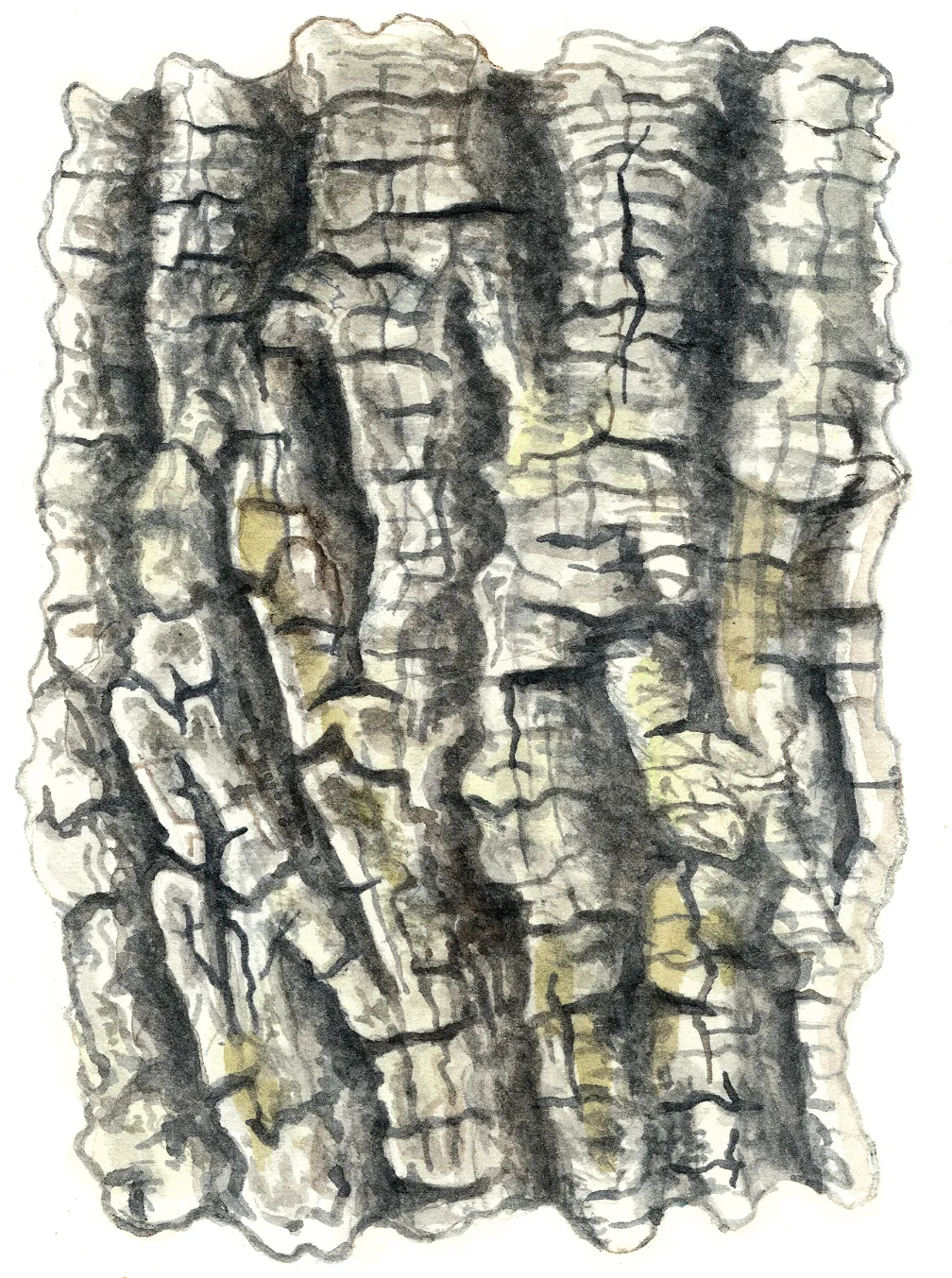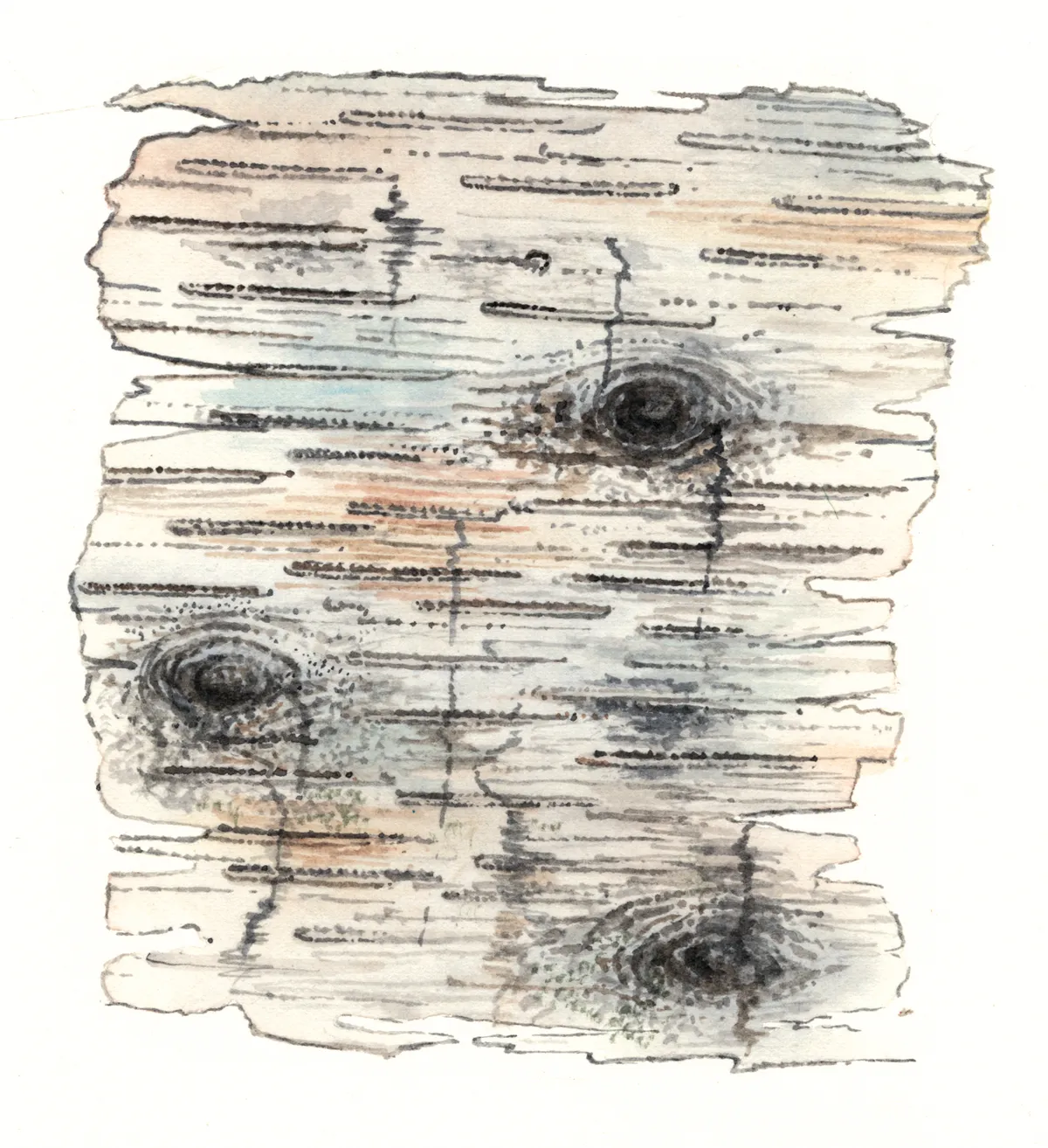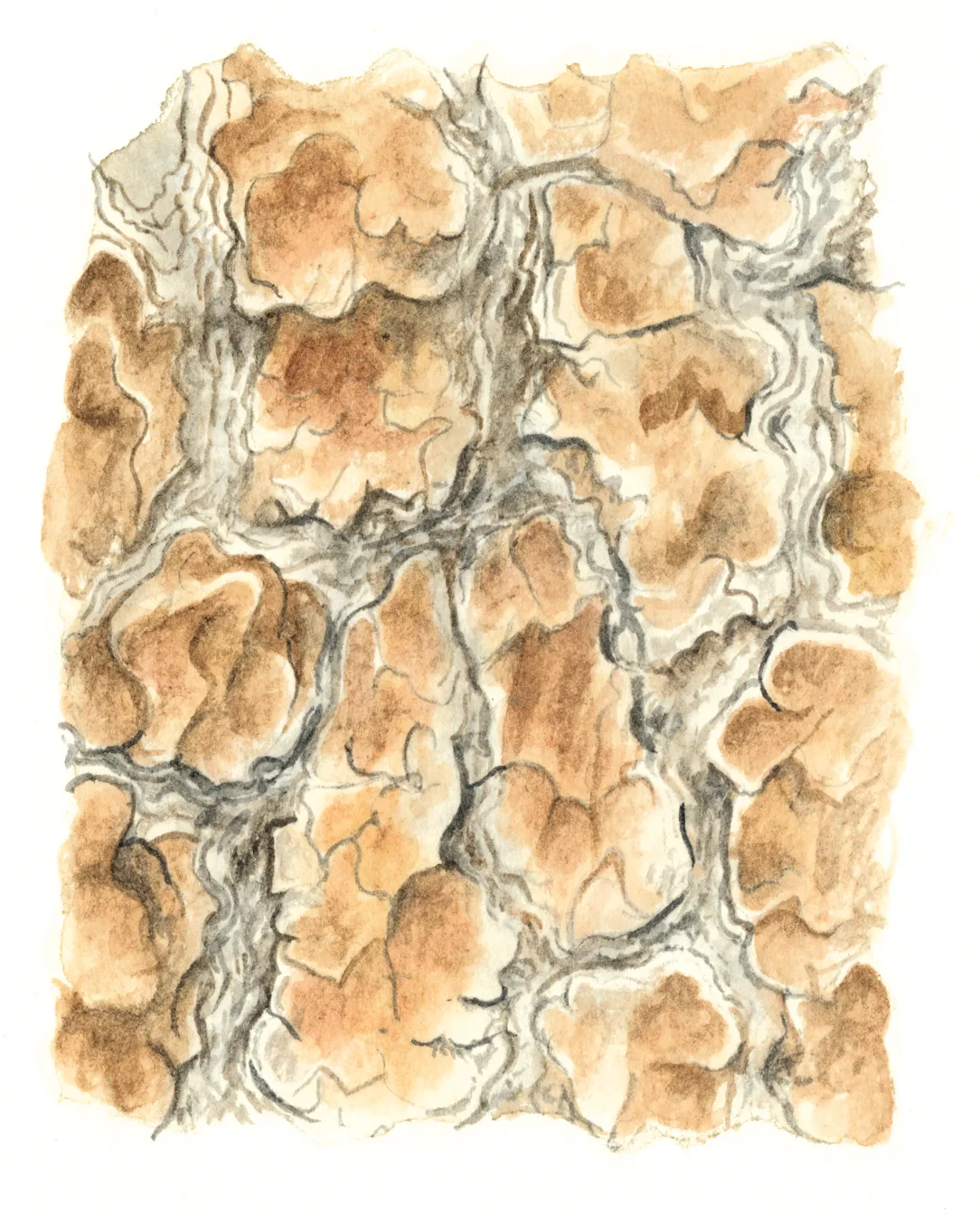Celebrate the diversity of our trees by taking a closer look at the bark of a dozen, mostly common, native species.
There’s real beauty in bark. When low winter sun glances off the trunks of Scots pines, it creates foxy flares that contrast with the blue-green foliage, and it burnishes the shiny bark of wild cherries to a rich maroon. An ash copse transforms into a ghost-wood as the pallid trunks reflect waning winter light.
But though we may be dazzled by bark’s form, its function is to protect the tree. It is made up of many layers, including the outer layer, or periderm, which often has dots or marks known as lenticels. These are breathing pores and are most obvious on aspen and birch. (Cut a wine-bottle cork in half and you’ll see the pores as long passages.)
Bark’s inner layer, called bast, contains conductive tissue that transports food around the tree. The stringy bast of lime trees was once used for rope-making.
Ash tree bark (Fraxinus excelsior)

Ash tree bark is smooth and pale grey in saplings. With age, the bark develops shallow grooves, deep fissures and bosses.

Wild cherry tree bark (Prunus avium)

Wild cherry tree bark is shiny and maroon, with ‘tiger’ stripes; often also deep grooves and lenticel strips. Old bark peels off in ribbons.

Pedunculate oak tree bark (Quercus robur)

Pedunculate oak tree bark is grey-brown, but often dusted in algae. Old trees become craggy, with regular deep grooves, wider at base.
Aspen tree bark (Populus tremula)

Aspen tree bark is pale grey or off-white, with dark, diamond-shaped lenticels that fuse into channels as the tree ages.

Elder tree bark (Sambucus nigra)

Elder tree bark is greyish-brown, crossed with deep, corky ridges. This large shrub usually has some leafy buds in winter.

Discover foraging recipes using elderflowers:
Small-leaved lime tree bark (Tilia cordata)

Small-leaved lime tree bark is smooth and grey in saplings; more grooved with age. Great spotted woodpeckers drill holes to suck sap.

Crack willow tree bark (Salix fragilis)

Crack willow tree bark is brown and crisscrossed with deep ridges; twigs olive-green and brittle. Older trees are often pollarded.
Black poplar tree bark (Populus nigra)

Black polar tree bark has deep fissures and large bosses when mature. Similar to cultivated poplars, but with arched, decurved branches.
Beech tree bark (Fagus sylvatica)

Beech tree bark is smooth and grey, with bosses and lumps as tree ages. Often carved with graffiti (not good for the tree).
Silver birch tree bark (Betula pendula)

Silver birch tree bark is shiny and purple-chestnut in saplings. With age, turns silver-white, with large black lenticel grooves and bosses.

Downy birch tree bark (Betula pubescens)

Downy birch tree bark is whitish with grey smudges and black grooves, but usually duller than silver birch. Twigs have tiny hairs.
Scots pine tree bark (Pinus sylvestris)

Scots pine tree bark is pinkish-red with shallow grooves, deeper with age; the bark cracks into small plates or scales. This is our only native pine.

Main image: Close-up of a tree trunk. © Peter Owen/EyeEm/Getty
